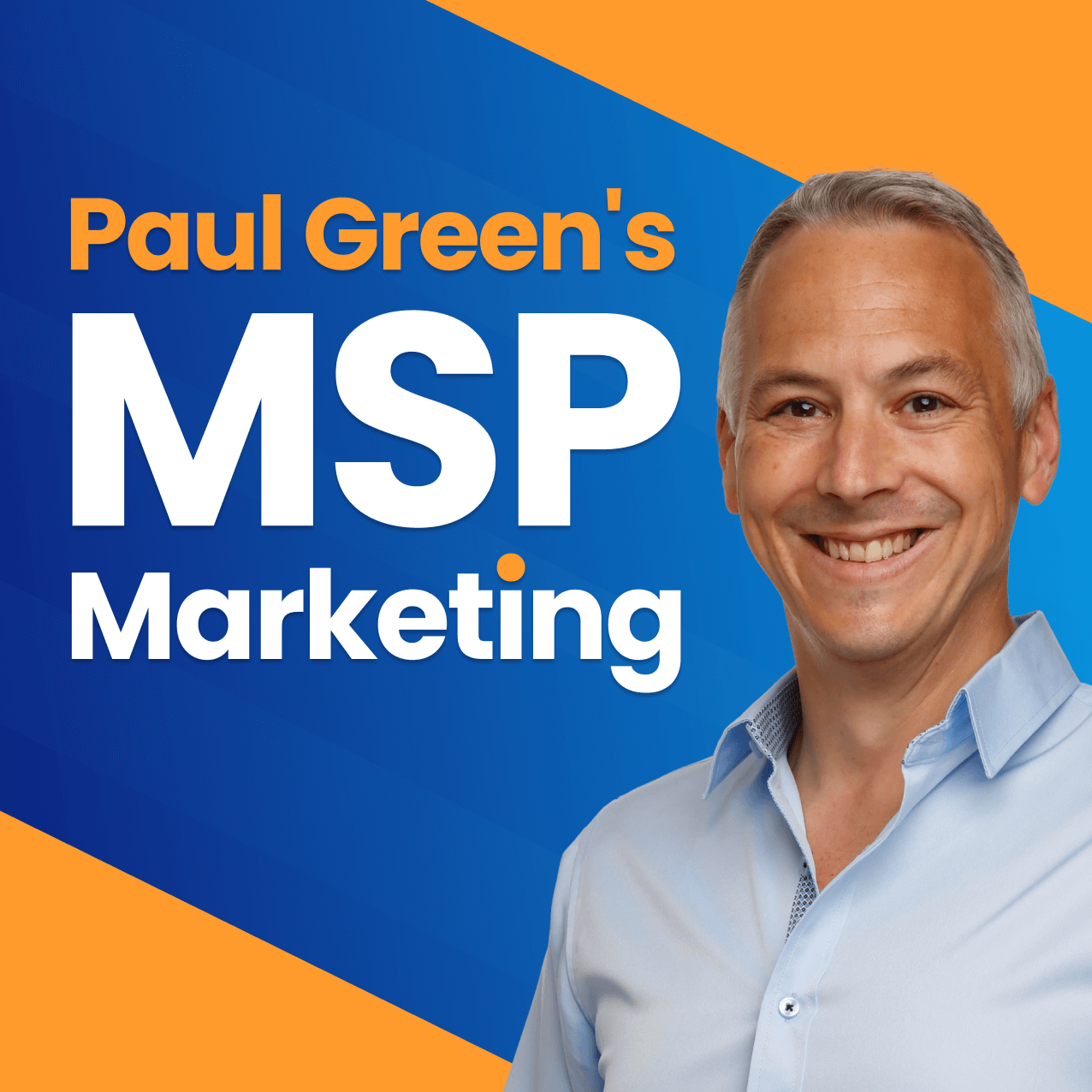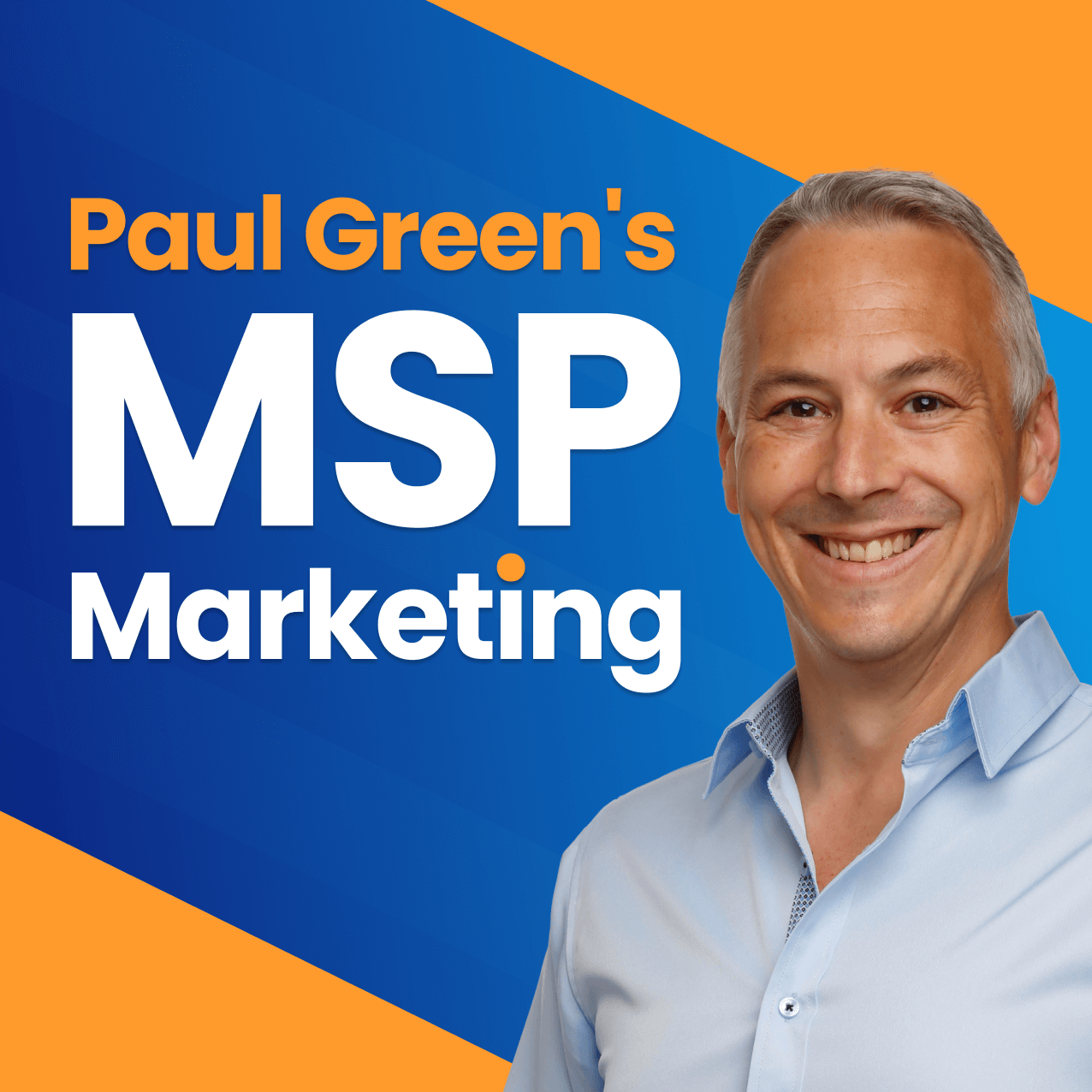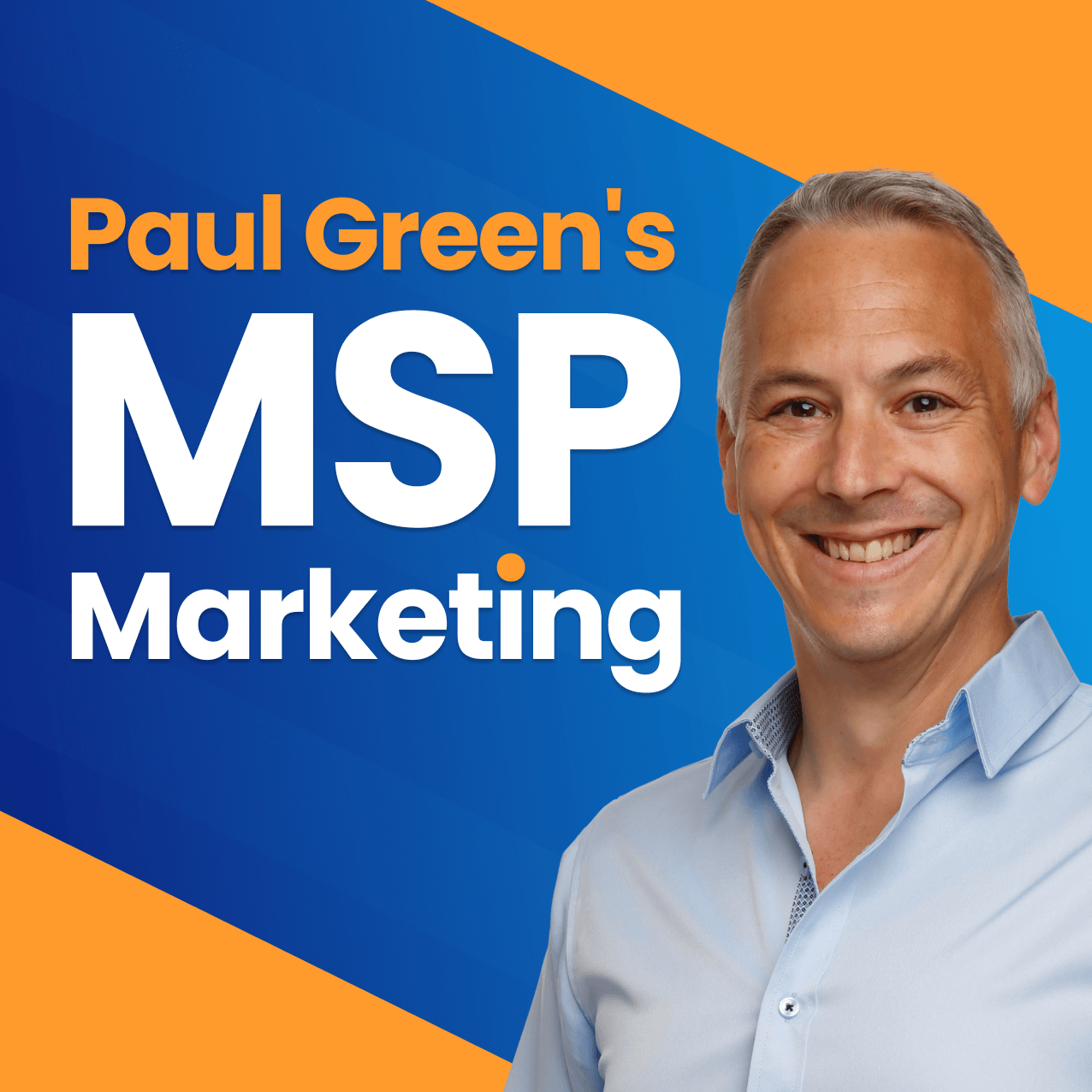What the yellow car game teaches MSPs about marketing
Description
The podcast powered by the MSP Marketing Edge
Welcome to Episode 257 of the MSP Marketing Podcast with me, Paul Green. This week…
- What the yellow car game teaches MSPs about marketing: There’s a part of our brain called the Reticular Activating System which acts as a sensory filter. You might see and hear everything, but you only perceive it if it’s relevant to you.
- Here’s a simple marketing cadence that your MSP can swipe and adapt: How to build a marketing system around repeatable daily, weekly and monthly tasks that will work for any MSP.
- How offering custom development boosts client retention for MSPs: Retaining a client is so much easier than to getting a new one. Is this a potential gap in your MSP’s offering?
- Paul’s Personal Peer Group: Dale, from northeast England, has a website question for his MSP – Should I buy a website domain ending in .io?
What the yellow car game teaches MSPs about marketing
You must often have conversations with ordinary business owners or managers and be gobsmacked just how little they’ve absorbed about stuff from our world, such as cyber security breaches that are in the news or critical updates that need to happen. Have you ever wondered why that is? It’s not just that they don’t care, it’s actually more that their brain has been trained not to tell them about it. You see, the brain has a kind of bodyguard that stops information from getting in and it actually explains why most people don’t perceive your MSP’s marketing. Good news – there is a way around this bodyguard, and the easiest way for me to explain that is to tell you about the yellow car game.
Every time we travel in the car together, my 14-year-old child and I play a really cool game, when we see a yellow car, we have to punch the other person on the arm and the first one to land a punch wins that round. I’m very pleased to tell you that I am the current yellow car champion. Now, this game makes long journeys just whiz by, believe me. And what’s really fun is playing the game with other passengers in the car because my daughter and I absolutely slaughter them. And no wonder because our brains have been trained to actively look for yellow cars, whereas of course our passengers are seeing yellow cars but not perceiving them.
This is because the bodyguard that stops information getting into their brain has not yet been trained to look for yellow cars. Now, this bodyguard has a name, it’s called the reticular activating system, and it has lots of functions, but the most important thing from a marketing point of view is that it acts as a sensory filter. If you had to consciously deal with all of the information coming in from your five senses, you would very quickly go insane. So instead that information goes through the Reticular Activating System, which acts as a relevance filter.
For the small number of things that are relevant to you, it allows you to perceive them. Everything else you might see it or hear it, but you don’t perceive it. And this is why when you go to, let’s say a new town, you see the break/fix shops, you see the vans belonging to other MSPs, because as far as your reticular activating system is concerned they are relevant to you. But you don’t see the dentists and you don’t see the lawyers, unless of course you are marketing to those kind of people, because they are not relevant you. When you understand that everything you do and say to anyone goes through their reticular activating system, and especially your marketing, then you get a blinding realisation why people just don’t seem to take in the things you’re trying to say to them.
And in understanding how the reticular activating system works, there is the clue of how to beat it. Because if the filter is based on relevance, then you have to make the marketing seem more relevant to them.
This is super easy if you operate in a niche and you want to, let’s say, sell to lawyers – you just put the word lawyer in your marketing. Yeah, it really is as simple as that.
It’s a little bit harder with a general audience, but even here you can make your marketing seem more relevant to them. Use your town or city name or use the phrase business owner. As many business owners relate to that.
Anytime you’re doing any marketing at all, writing any words or creating any images, even down to a simple post on LinkedIn, you must be asking yourself this – How do I beat their brain’s bodyguard? How do I wave a massive flag at the reticular activated system to say, Hey, look at me, this is really relevant to your owner’s brain, so please let them perceive this. I think the secret to this is being very, very clear on who your audience is and being very clear what interests them and what doesn’t.
Here’s a simple marketing cadence that your MSP can swipe and adapt
One of the ways to make marketing easy for your MSP is to turn it into a regular system where marketing tasks happen on a specific cadence. Essentially, instead of your marketing being haphazard and relying on you remembering to do it, you turn it into a habit. Let me tell you a really robust cadence that will work for any MSP.
So what is a cadence? Well, it’s a rhythm that you get into, critical if you want to make sure that something happens on a regular basis like your marketing. Far too many MSPs, focus their marketing around one-off campaigns. These can be great, but only if you run them regularly.
You’ve heard that you need seven to 10 touchpoints with a prospect before they’re ready to talk to you, right? Well, you also need to be in front of them at the right time, the exact moment they are ready to think about leaving their incumbent MSP.
That’s really hard to do with one-off campaigns, especially since there’s a ton of work to get the campaign off the ground and then it’s over and it’s too easy to delay the next ton of work to get the next campaign running.
This is why I recommend most MSPs focus on setting up a marketing system. In fact, our MSP Marketing Edge is based around a powerful three-step lead generation system. So here’s a simple marketing cadence you can use in your MSP. It’s based around a series of repeatable tasks that can help you to build multiple audiences, grow a relationship with them, and find a moment they are most open to talking to you, to convert that relationship.
These tasks can be implemented by your team or marketing freelancers working for you. So this starts off with some daily tasks. Daily you’d build your audience by making a number of connection requests on LinkedIn, say 10 of those, and then you’d collect the email address of new connections to add to your email database. Another daily job will be to build relationships by adding content to LinkedIn and commenting on other people’s posts. And another daily task will be to make follow-up phone calls to all of these new people that you are meeting.
Let’s do some weekly tasks. Weekly, I believe you should be sending a LinkedIn newsletter and send it on the same day each week. Also weekly, send an educational email to your database. That’s why you are building up those email connections that we were talking about earlier.
Then let’s go to some monthly tasks. I believe monthly you should run a marketing campaign, but do one every month aimed at your hottest prospects. Don’t send a campaign to a prospect every month. They might get two or three a year, but every month you can target some prospects with a campaign. And monthly you can ship a printed newsletter to your hottest prospects. That you can do every single month if you wanted to. Which of these repeatable marketing tasks do you think would work best for your MSP?
How offering custom development boosts client retention for MSPs
Featured guest: George Toursoulopoulos is a CEO and technology leader with over 20 years of experience in the software development industry. As the founder and CEO of Synetec, George has built a reputation for delivering innovative software solutions that drive business growth and operational efficiency.
George’s expertise spans across strategic leadership, digital transformation, and fostering high-performing teams. Passionate about helping businesses leverage technology to solve complex challenges, George is dedicated to ensuring that Synetec’s clients achieve measurable success through tailored software solutions.
The idea of offering custom software development to your clients might be the worst thing you’ve ever heard, because that means managing expectations, crazy complicated development plans, and of course developers. But my special guest today believes you have to, and not just as a profit centre, but as a client retention strategy.
Today’s guest believes your clients see software development just like they see websites. To them, it’s all just technology and they would rather buy it from you, but if they can’t, maybe they’ll go somewhere else for it.
Hi, I’m George Toursoulopoulos, CEO of Synetec.
George, thanks for coming onto the podcast. You are perhaps the best example of why I always ask our guests to introduce themselves so I never have to learn how to pronounce difficult surnames. It’s a delight to have you on here. You were recommended by two or three separate people to come on and talk about a very interesting subject – why MSPs shoul








